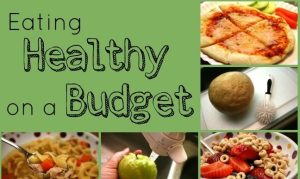Introduction
Eating well doesn’t have to cost a fortune. In 2025, with food prices rising, mastering healthy eating on a budget is more important than ever. By choosing smart ingredients and simple strategies, you can enjoy nutritious meals without overspending. This guide will show you how to plan meals, shop wisely, cook efficiently, and even dine out affordably. You’ll discover budget-friendly meals that taste great and fuel your body, along with tips to stay motivated. Say goodbye to bland instant noodles and hello to vibrant plates of healthy, wallet-friendly food.
What Is Healthy Eating on a Budget?
Healthy eating on a budget means getting the nutrients your body needs—protein, fiber, vitamins, and healthy fats—without spending too much. It’s about swapping expensive convenience foods for whole, inexpensive ingredients. Rather than grabbing pre-made meals, you cook from scratch using staples like beans, oats, rice, and seasonal produce. This approach focuses on Affordable Nutrition, ensuring balanced meals that support energy, mood, and overall health. Over time, these choices add up to big savings and better well-being.
Why It Matters in 2025
By 2025, economic pressures and supply chain shifts make grocery bills climb. Yet poor diet raises healthcare costs and lowers work productivity. Embracing cheap healthy meals now helps families save money and avoid diet-related diseases. Learning meal planning on a budget also reduces food waste—another cost saver. This year, more people work remotely, giving extra hours for cooking. That means you can transform meal times into creative, budget-friendly projects. Investing a bit of effort today sets you up for long-term health and financial freedom.
How to Plan Smart Meals

Good meal planning on a budget starts with a simple weekly menu. Pick two to three proteins—like beans, eggs, and canned fish—and build meals around them. Plan breakfasts, lunches, dinners, and two snacks. Shopping from this list prevents impulse buys. Use a digital note or printable template to track ingredients you already have, like rice or spices, to avoid duplicates.
Group similar recipes together—roast a batch of vegetables to use in salads, wraps, and grain bowls. Make one-pot meals like chili or stir-fries where you can swap ingredients based on sales. This makes cooking faster and prevents waste. Finally, set aside time on weekends to prep veggies, cook grains, and portion snacks for the week.
What to Buy: Budget-Friendly Superfoods

Superfoods often carry high price tags, but many budget heroes deliver big nutrition for little cost:
- Beans and Lentils: High in protein and fiber, they cost pennies per serving.
- Oats: Versatile for breakfast or baking, oatmeal fuels you with slow-release carbs.
- Frozen Vegetables: Flash-frozen at peak ripeness, they match fresh produce in nutrients and last months.
- Eggs: A complete protein source that’s usually affordable and quick to cook.
- Brown Rice and Whole Grains: Bulk buys store well and form the base of many dishes.
- Canned Tuna and Sardines: Rich in omega-3s and protein, they add variety to sandwiches and salads.
- Bananas and Apples: Often the cheapest fresh fruits, they keep well and snack-ready.
Buying these staples in larger packs or during sales cuts costs further. Rotate items to keep your diet balanced.
How to Shop Smart at the Grocery Store

A little strategy at the store goes a long way. Shop the perimeter first—produce, dairy, and meat sections—then venture inside for staples like grains and canned goods. Avoid aisles of packaged snacks, which add little nutrition and more expense.
Use store apps and websites to find coupons and weekly deals. Sign up for loyalty programs to earn points or get member-only discounts. Bring reusable bags for small stores that offer a rebate per bag.
Compare unit prices to buy the best deal. For example, a bulk bag of carrots may cost less per pound than the small pre-cut packs. When fresh produce is expensive, buy frozen or canned (without added sugar or salt) instead.
How to Cook and Store Leftovers

Cooking in bulk saves both time and money. Make large batches of soups, stews, or casseroles, then divide them into single portions. Store in airtight containers in the fridge for up to four days, or freeze up to three months.
Get creative with leftovers: turn leftover rice into fried rice with scrambled eggs and frozen peas, or use extra roasted vegetables in omelets and wraps. Label containers with dates to avoid spoilage and waste.
Invest in quality storage containers—glass or BPA-free plastic—that stack neatly. This organization helps you see what you have and reminds you to eat leftovers first, preventing forgotten meals at the back of the fridge.
How to Eat Out Without Overspending

Even occasional restaurant meals can fit a tight budget. Look for lunch specials or early-bird menus with smaller portions at lower prices. Choose dishes with seasonal veggies and lean proteins rather than heavy creams or extra sauces.
Share large entrees or appetizers with a friend if portions are generous. Skip expensive drinks—opt for water or ask for tap water with lemon. Search apps for restaurant coupons or cash-back deals.
If you’re at fast-casual spots, build your own bowls with grains and veggies. Select proteins like grilled chicken or beans. Many chains list calorie and price information online to help you choose healthy, budget-friendly options.
Table: Sample Budget-Friendly Weekly Meal Plan
| Day | Breakfast | Lunch | Dinner | Snack |
|---|---|---|---|---|
| Monday | Oatmeal with banana | Chickpea salad wrap | Vegetable stir-fry with rice | Apple slices with peanut butter |
| Tuesday | Scrambled eggs & toast | Leftover stir-fry | Lentil soup and whole-grain bread | Carrot sticks |
| Wednesday | Yogurt with oats | Tuna salad on lettuce | Black bean tacos | Orange segments |
| Thursday | Smoothie (spinach, fruit) | Brown rice bowl with beans | Baked potatoes & mixed veggies | Handful of nuts |
| Friday | Pancakes from oats | Egg salad sandwich | Pasta with tomato sauce & veggies | Frozen berries |
Tips to Stay Motivated with Budget Eating

Sticking to healthy eating on a budget takes mindset and motivation. Celebrate small wins—like cooking five meals at home in one week. Keep a food journal to track meals, costs, and energy levels. When you see progress, it spurs you on.
Join online forums or social media groups dedicated to budget-friendly meals. Sharing recipes and successes helps maintain enthusiasm. Involve family or roommates in meal prep—cooking together makes it more fun and splits the work.
Use any savings for a fresh treat—like a special fruit or spice you’ve wanted to try. This reward system keeps your meals exciting and your wallet happy.
Conclusion
Eating healthy on a tight budget is completely doable in 2025. By mastering Meal Planning on a budget, choosing budget-friendly superfoods, and shopping wisely, you save money and boost your health. Bulk cooking, smart leftovers, and savvy dining out keep your wallet—and your body—happy. Remember to track progress, celebrate small wins, and stay flexible. With these strategies, you’ll enjoy delicious, nutritious meals every day without overspending. Start today, and transform your eating habits into a sustainable, wallet-friendly lifestyle.
Call-to-Action: Ready to eat well without breaking the bank? Try one budget-friendly recipe this week and share your success with #HealthyBudgetMeals2025 to inspire others!










